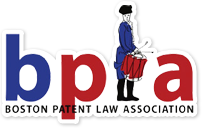
2 Ways Courts Approach Willful Infringement After Halo
Republished with permission from Law360, New York (
Original
- January 18, 2017)
Group 2: Egregiousness Is Required to Plead Enhanced Damages
Other courts in the District of Delaware and District of Nevada have held that a higher bar exists to plead willfulness and have granted motions to dismiss where the plaintiff did not allege egregious conduct.15 These cases typically cite Justice Breyer’s concurring opinion in Halo where he emphasized the majority’s own language that “enhanced damages are generally appropriate ... only in egregious cases.”16
For example, in Varian Medical Systems Inc. v. Elekta AB, Judge Christopher J. Burke in the District of Delaware granted the defendant’s motion to dismiss where the plaintiff did little more than provide a formulaic recitation of the pre-Halo elements of willful infringement. The court stated that the complaint did not “sufficiently articulate how the [defendant’s conduct] actually amounted to an egregious case of infringement of the patent.”17
In Princeton Digital Image Corp. v. Ubisoft Entm’t SA, another case before Judge Burke, the plaintiff filed a third amended complaint wherein it alleged willful indirect infringement by the defendant. The court ultimately dismissed the claim because the plaintiff failed to allege indirect infringement in its original complaint and the defendant was not on notice of its own willful infringement.18 However, the court noted that “even if one were to assume that the original complaint did sufficiently put Ubisoft SA on notice of its indirect infringement, the TAC does not sufficiently articulate how Ubisoft SA’s actions during a short, three-month period of time amount to an ‘egregious’ case of infringement of the patent.”
The District of Nevada issued a similar ruling. In CG Technology Development LLC v. Big Fish Games Inc., the court granted the defendant’s motion to dismiss because the plaintiff failed to allege any facts suggesting the defendant’s conduct was “egregious … beyond typical infringement.” According to this court, the plaintiff’s conclusory allegations of knowledge of the patent and continued use of the infringing products was the type of conduct Justice Breyer stated was insufficient to constitute willful infringement.19
Conclusion
After Halo, district courts have taken diverging approaches to the pleading requirements for willful infringement. At a minimum, the plaintiff must plead facts sufficient to demonstrate presuit knowledge of the asserted patent. Other district courts may, however, require allegations sufficient to support a finding of egregious conduct by the defendant. Although the sample size of cases is small, litigants should be aware of these varying standards when seeking enhanced damages under 35 U.S.C. § 284 and when moving to dismiss such claims.
Natalie Hanlon Leh
is a partner and Michael Silhasek
is a senior associate in the Denver office of WilmerHale
.
The opinions expressed are those of the author(s) and do not necessarily reflect the views of the firm, its clients, or Portfolio Media Inc., or any of its or their respective affiliates. This article is for general information purposes and is not intended to be and should not be taken as legal advice.

By
Natalie Hanlon Leh
and Michael Silhasek
, WilmerHale


[1] Halo Elecs., Inc. v. Pulse Elecs., Inc., 136 S. Ct. 1923, 1932 (2016).
[2] Supreme Court of the United States, Amendments to the Federal Rules of Civil Procedure, available at http://www.supremecourt.gov/orders/courtorders/frcv15(update)_1823.pdf.
[3] Halo Elecs., Inc. v. Pulse Elecs., Inc., 136 S. Ct. 1923, 1938 (2016) (Breyer concurring).
[4] Blitzsafe Texas, LLC v. Volkswagen Group of America, Inc., 2016 WL 4778699 (Aug. 19, 2016 E.D. Tex.); DermaFocus LLC v. Ulthera, Inc., No. 15-654-SLR, 2016 WL 4263122 (D. Del. Aug. 11, 2016); Audio MPEG, Inc. v. HP Inc., No. 2:15-cv-00073-HCM-RJK, 2016 WL 7010947 (E.D. Va. July 1, 2016); Malibu Boats, LLC v. Mastercraft Boat Company, LLC, 3:16-cv-82-TAV-HBG (Oct. 28, 2016 E.D. Tenn.).
[5] Blitzsafe Texas, LLC v. Volkswagen Group of America, Inc., 2016 WL 4778699, at *6 (Aug. 19, 2016 E.D. Tex.).
[6] Id.
[7] Id. at 7.
[8] Malibu Boats, LLC v. Mastercraft Boat Company, LLC, 3:16-cv-82-TAV-HBG, *2-*3 (Oct. 28, 2016 E.D. Tenn.).
[9] Id. at 6 (citing Minn. Mining & Mfg. Co. v. Johnson Orthopedics, Inc., 976 F.2d 1559, 1581 (Fed. Cir. 1992)).
[10] Scripps Research Inst. v. Illumina, Inc., No. 16-cv-661 JLS (BGS), 2016 WL 6834024, at *7 (S.D. Cal. Nov. 21, 2016)
[11] Id.
[12] Id.
[13] DermaFocus LLC v. Ulthera, Inc., No. 15-cv-654-SLR, 2016 WL 4263122, at *6 (D. Del. Aug. 11, 2016).
[14] Id.
[15] Princeton Digital Image Corp. v. Ubisoft Entm't SA, No. 13-cv-335-LPS-CJB, 2016 WL 6594076 (D. Del. Nov. 4, 2016); CG Tech. Dev., LLC v. Big Fish Games, Inc., No. 2:16-cv-00857-RCJ-VCF, 2016 WL 4521682 (D. Nev. Aug. 29, 2016); Varian Med. Sys., Inc. v. Elekta AB, No. 15-cv-871-LPS, 2016 WL 3748772 (D. Del. July 12, 2016).
[16] Halo Elecs., Inc. v. Pulse Elecs., Inc., 136 S. Ct. 1923, 1936 (2016) (Breyer concurring).
[17] Varian Med. Sys., Inc. v. Elekta AB, No. 15-cv-871-LPS, 2016 WL 3748772, at *8 (D. Del. July 12, 2016).
[18] Princeton Digital Image Corp. v. Ubisoft Entm't SA, No. 13-cv-335-LPS-CJB, 2016 WL 6594076, at *11 (D. Del. Nov. 4, 2016).
[19] CG Tech. Dev., LLC v. Big Fish Games, Inc., No. 2:16-cv-00857-RCJ-VCF, 2016 WL 4521682, at *14 (D. Nev. Aug. 29, 2016)
This article analyzes how district courts have addressed the sufficiency of pleading enhanced damages after Halo at the motion to dismiss stage. (The
In Halo Electronics Inc. v. Pulse Electronics Inc., the U.S. Supreme Court rejected the “unduly rigid” framework first articulated in Seagate nearly a decade ago for awarding enhanced damages under 35
U.S.C. § 284 in the case of willful patent infringement.1 In doing so, the court noted that awards of enhanced damages were left to the discretion of the district court but have typically been reserved for “egregious” infringement behavior. In the wake of the new approach to willfulness and enhanced damages enunciated in Halo and the elimination of Form 18 in the Federal Rules of Civil Procedure,2 several district courts have addressed whether patentees sufficiently plead willful infringement at the motion-to-dismiss stage. We discuss here some of the divergent approaches district courts have taken with respect to this issue.
As an initial matter, courts agree that a plaintiff must allege knowledge of the asserted patent as a prerequisite to alleging willful infringement. Once plaintiffs clear this hurdle, however, courts have generally taken two different approaches to the requirements for pleading willfulness.
One approach sets a relatively low bar, requiring only that a patentee plead that the accused infringer had knowledge of the asserted patents that could potentially support a finding of egregiousness. And in these cases, some courts have taken a broad view of what constitutes “knowledge” of the patents.
The other approach sets a relatively high bar, requiring that the complaint contain allegations of egregious conduct. District courts taking the second approach typically cite to Justice Stephen Breyer’s concurring opinion in Halo stressing that enhanced damages be reserved for “cases of egregious misconduct.”3
Litigants should be aware of these different approaches when they plead and respond to claims for willful infringement and enhanced damages.
first article in this two-part series
considered district court decisions on enhanced damages issued within the first six months after Halo.)Group 1: Knowledge of the Patent Is Sufficient to Plead Enhanced Damages
Some judges in the Eastern District of Texas, District of Delaware, Eastern District of Virginia, and the Eastern District of Tennessee have ruled that pleading presuit knowledge of the asserted patent is sufficient to allege willful infringement.4 “Knowledge” of the asserted patent can be a more complicated issue than it may initially seem, and some courts have
imputed knowledge, at least at the motion-to-dismiss stage, when the details surrounding the alleged “knowledge” make it plausible that the defendant was aware of the patent.
In the Eastern District of Texas case of Blitzsafe Texas LLC v. Volkswagen, the defendants argued that knowledge of a patent application — not the patent — was insufficient to allege presuit willfulness. The defendants further argued that the plaintiff had not alleged post-suit willfulness because plaintiff did not seek an injunction.5 The court denied the defendant’s motion to dismiss on both counts. For presuit willful infringement, the court reasoned that the defendant could have learned of the patent when the defendant cited the patent application in an inter partes re-examination proceeding, which occurred after the patent had issued.6 As for post-suit willfulness, the court denied the motion to dismiss because the complaint notified the defendant of the issued patent and it recited facts that stated a plausible claim of direct and indirect infringement. The court observed that the defendants had not ceased the allegedly infringing activities, which the amended complaint implied was characteristic of willful infringement. The court therefore found it plausible that the defendants could be “deliberately continuing to infringe despite notice they are infringing the asserted patents.”7
In the Eastern District of Tennessee case of Malibu Boats LLC v. Mastercraft Boat Company LLC , the plaintiff filed its complaint for patent infringement on the same day the asserted patent was issued and alleged enhanced damages based, in part, on the defendant’s knowledge of the notice of allowance and issue notification for the asserted patent.8 Citing Federal Circuit precedent, the court denied the defendant’s motion to dismiss noting that “pre-patent conduct may also be used to support a finding of willfulness.”9
Even in cases where motions to dismiss are granted, some courts suggest that the knowledge requirement may be met if there are sufficient factual allegations linking the defendant to the asserted patent. For example in Scripps Research Institute v. Illumina Inc., the plaintiff alleged that the defendant was aware of the asserted patents because the defendant previously licensed other patents from one of the named inventors.10 The court disagreed with the plaintiff that the defendant necessarily had knowledge of asserted patent because the inventor had over 80 patents and applications, and granted the motion to dismiss.11







